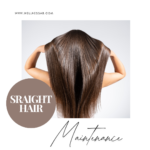
Table of Contents
Introduction
Seasonal skincare refers to the practice of adjusting your skincare routine according to the different seasons of the year. As the climate changes, so do the environmental conditions that affect your skin. Each season—spring, summer, fall, and winter—brings unique challenges and requires specific skincare strategies to maintain healthy, radiant skin. Seasonal skincare involves understanding these changes and modifying your products and practices to address issues like dryness, oiliness, sun damage, and sensitivity that are more prevalent in particular seasons. This approach ensures your skin stays balanced, protected, and nourished throughout the year
Spring Skincare
Transitioning from Winter to Spring
As the cold, dry winter air gives way to the milder, more humid days of spring, your skin needs to adjust. This is the perfect time to focus on rejuvenation and repair.
Exfoliation
Spring is an excellent time to exfoliate more frequently. Over the winter, dead skin cells can accumulate, leading to a dull complexion. Use a gentle exfoliant to slough off these dead cells and reveal fresher, brighter skin.
Hydration
While the air is more humid, it’s still essential to keep your skin hydrated. Switch to a lighter moisturizer if you find your winter cream too heavy. Look for products with ingredients like hyaluronic acid, which attracts moisture to the skin.
Sun Protection
As you spend more time outdoors, don’t forget to protect your skin from the sun’s harmful rays. Opt for a broad-spectrum sunscreen with an SPF of at least 30, and reapply every two hours when outside.
Click here to know more about natural skin nourishment tips for a g
lowing complexion
Summer Skincare
Managing Increased Oil Production
The summer heat can increase oil production, leading to breakouts and a shiny complexion. Choose oil-free, non-comedogenic skincare products to keep your skin clear and matte.
Staying Hydrated
In hot weather, your skin can lose moisture quickly. Drink plenty of water and use hydrating serums and light moisturizers. Aloe vera gel is a great option for its soothing and cooling properties.
Sun Protection
Sun protection is crucial in summer. Use a high-SPF sunscreen, wear hats and sunglasses, and seek shade during peak sun hours. Remember, UV rays can cause premature aging and increase the risk of skin cancer.
Cooling and Soothing
After a day in the sun, soothe your skin with cooling products. Look for after-sun lotions containing aloe vera or cucumber extract to reduce redness and irritation.
Fall Skincare
Repairing Summer Damage
Fall is a time to repair any damage caused by summer sun exposure. Incorporate antioxidants like Vitamin C into your routine to combat free radical damage and brighten your complexion.
Gradual Transition
As the weather cools, start incorporating richer moisturizers to prepare for the dry winter air. Look for ingredients like ceramides and fatty acids to strengthen your skin’s barrier.
Exfoliation
Continue to exfoliate to keep your skin smooth and to help with the absorption of richer creams and serums. Be cautious not to over-exfoliate, as your skin might be more sensitive after summer.
Hydration
Hydration remains key in fall. Switch to a heavier moisturizer as the air becomes drier. Consider adding a hydrating serum or facial oil to your routine for an extra moisture boost.
Winter Skincare
Combatting Dryness
Winter air is cold and dry, which can strip your skin of its natural oils. Opt for rich, emollient moisturizers to keep your skin hydrated and protect it from harsh winds.
Gentle Cleansing
Choose gentle, hydrating cleansers that won’t strip your skin of its natural moisture. Avoid hot water, which can further dehydrate your skin, and opt for lukewarm water instead.
Humidifiers
Using a humidifier in your home can add moisture to the air, preventing your skin from becoming too dry. This is especially useful during the night when your skin undergoes repair processes.
Sun Protection
Even in winter, UV rays can harm your skin. Use a broad-spectrum sunscreen daily, especially if you’re spending time outdoors. Snow can reflect UV rays, increasing exposure.
Year-Round Essentials
Consistent Routine
Maintaining a consistent skincare routine tailored to the season is essential. Cleanse, moisturize, and protect your skin every day to keep it healthy and resilient.
Diet and Hydration
A balanced diet rich in fruits, vegetables, and healthy fats can significantly impact your skin’s health. Stay hydrated by drinking plenty of water and herbal teas.
Avoiding Over-Exfoliation
Exfoliation is crucial for removing dead skin cells, but over-exfoliation can damage your skin’s barrier. Adjust the frequency of exfoliation based on your skin type and the season.
Listening to Your Skin
Your skin’s needs can change not just with the seasons but also with your lifestyle and environment. Pay attention to how your skin reacts and adjust your routine accordingly.
Conclusion
Adapting your skincare routine to the changing seasons can help maintain your skin’s health and appearance throughout the year. By understanding the unique challenges each season presents and choosing the right products and practices, you can keep your skin glowing and resilient. Embrace the changes, and enjoy the journey to healthier, more radiant skin.
For more personalized advice and expert skincare tips, consider consulting with a dermatologist or skincare professional who can tailor recommendations to your specific needs.











